 Friedel Klussman, an activist who fought to save San Francisco's cable cars. She's seen here in 1981.
Friedel Klussman, an activist who fought to save San Francisco's cable cars. She's seen here in 1981.
San Francisco nearly lost its cable cars in 1947, but thanks to the Citizens’ Committee to Save the Cable Cars, these landmarks are forever part of how we navigate and experience our dynamic city. Here’s how a woman named Friedel Klussman helped the committee wage – and win – an uphill battle against city leaders.
After World War II, San Francisco experienced many changes. The city faced a population boom, housing shortages, financial deficits and blight. The Municipal Railway was no exception to the challenges facing the city. After heavy use during the war and a lack of maintenance, the aging cable cars had become rickety and old.
Mayor Roger Lapham was focused on progress and renewal, and that included modernizing the city’s “old, outmoded and inefficient” transit system. The cable cars were at risk of being replaced.
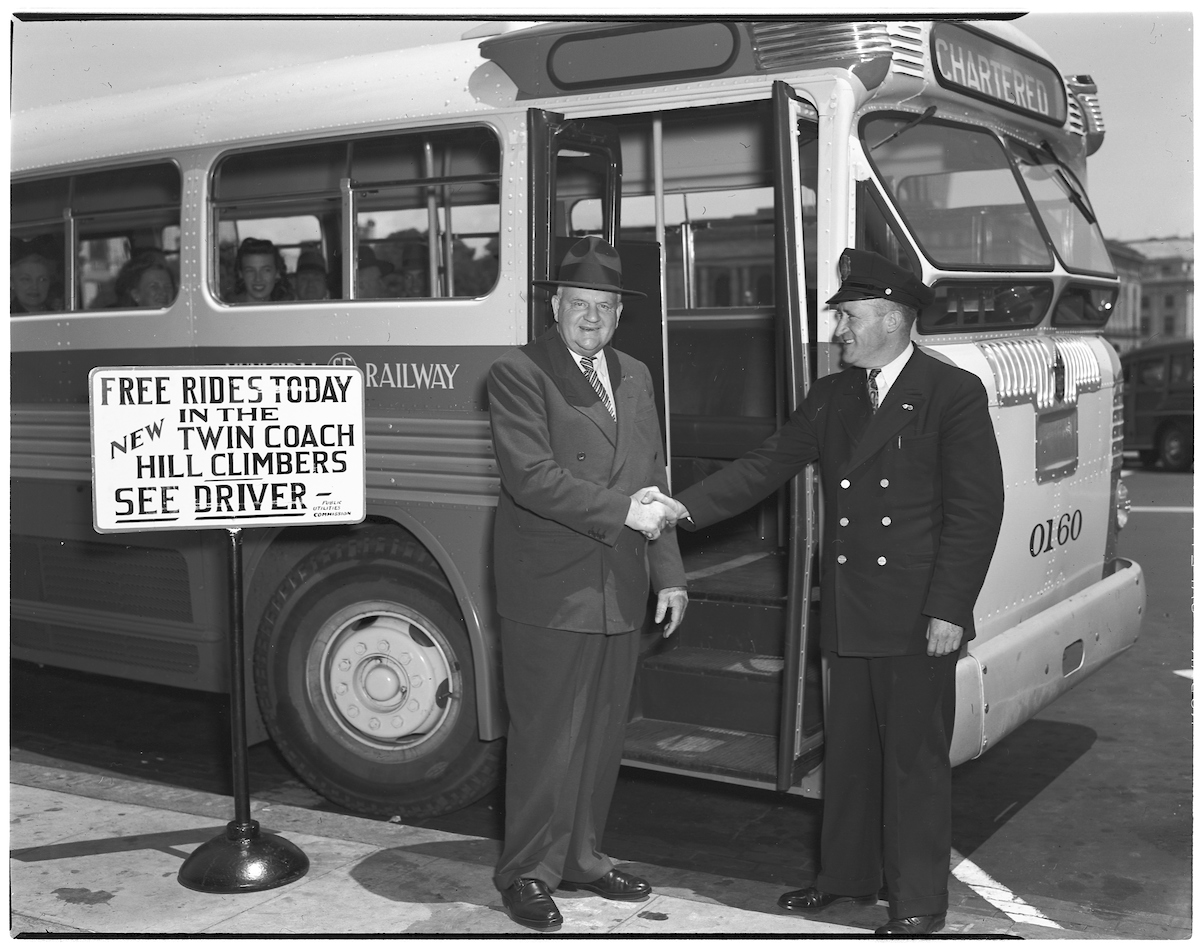 Mayor Roger Lapham and Muni Inspector with Fageol Twin Motor Coach. May 8, 1947.
Mayor Roger Lapham and Muni Inspector with Fageol Twin Motor Coach. May 8, 1947.
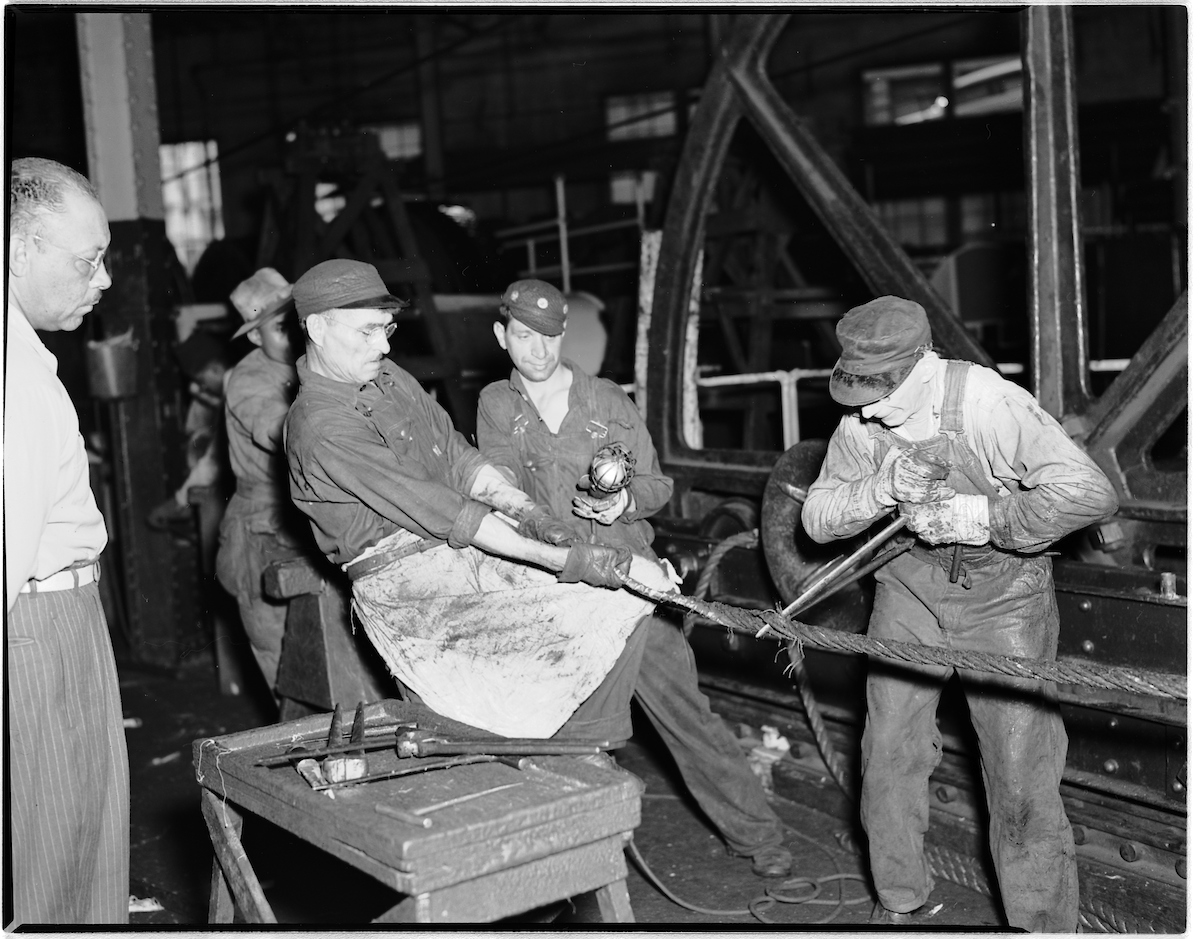 Cable Repairers Splicing Cables at Washington and Mason Cable Car House. April 21, 1947.
Cable Repairers Splicing Cables at Washington and Mason Cable Car House. April 21, 1947.
Unexpected pushback came from a women’s group called the San Francisco Federation of the Arts which created the Citizens’ Committee to Save the Cable Cars. Friedel Klussmann steered the committee, which earned her the nickname “the Cable Car Lady.”
Soon, a vicious and very public fight began. Klussman and the committee launched a resolution, petitions and contests. They even received celebrity endorsements to save the cable cars. All of this public debate only seemed to elevate the cable cars ever higher into icon status.
The matter was put to a public vote on Nov. 4, 1947. Proposition 10 would require the Public Utilities Commission to maintain and operate the present cable car system. It passed by a generous margin, with 77% support.
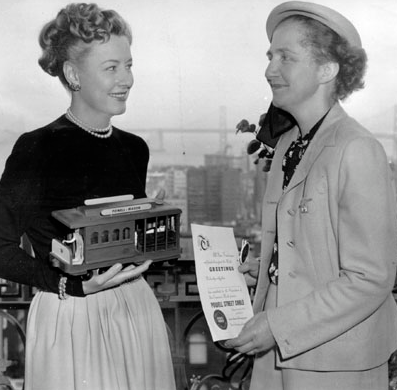
Actress Irene Dunne (left) receiving a certificate from Friedel Klussmann in recognition of her contribution to the "Save the Cable Cars" campaign. Aug. 26, 1947. (San Francisco History Center, San Francisco Public Library)
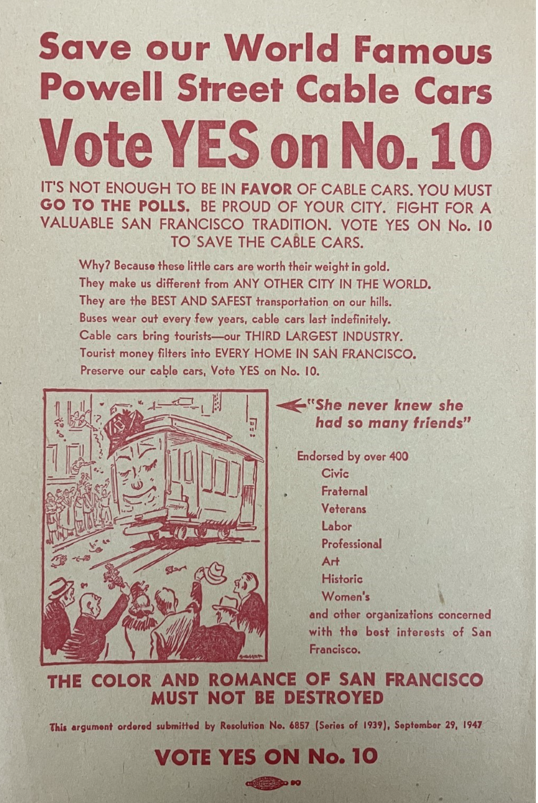
Vote YES on No. 10 voter outreach flyer
Saving the cable cars was a great feat, not only for the cars but for women. Klussman and the committee demonstrated the power of organizing around a civic and political cause in an era ruled by men. Friedel Klussmann went on to found the nonprofit San Francisco Beautiful, which is still active today. She died in 1986 at the age of 90.
In 1997, the City of San Francisco dedicated the cable car turntable at the northern end of the Powell-Hyde line to Klussmann.

Published in 1952, Maybelle the Cable Car, by Virgina Lee Burton, tells the story of the 1947 fight to save the cable cars in San Francisco. Cover shown.
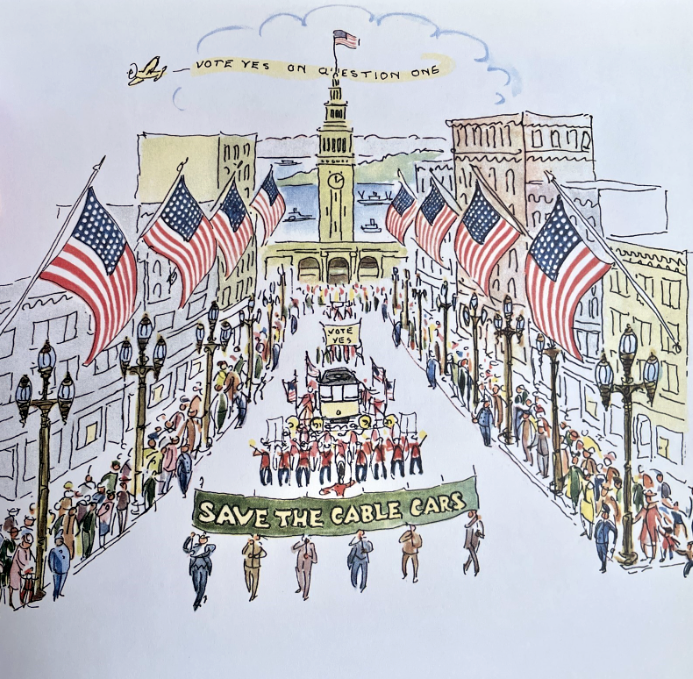
Published in 1952, Maybelle the Cable Car, by Virgina Lee Burton, tells the story of the 1947
fight to save the cable cars in San Francisco. p. 29 shown.